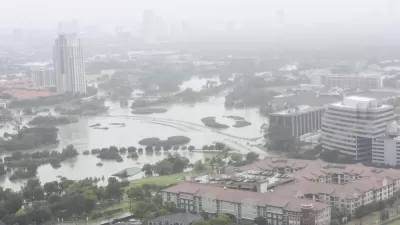In my first week here in Beijing, I have spoken to a number of scholars here about climate change. A few observations; 1. China's scholars are thinking about climate change mitigation but I haven't met many talking about adaptation.
In my first week here in Beijing, I have spoken to a number of scholars here about climate change. A few observations;
1. China's scholars are thinking about climate change mitigation but I haven't met many talking about adaptation.
2. On the mitigation side, there are a number of efforts underway to create a "Report Card" for cities in terms of total carbon emissions. They say that industry is responsible for 70% of a city's footprint. Relative to the USA , transportation's share is very small. To reduce a city (such as Beijing's) carbon footprint, there is talk of moving highly energy intensive factories (such as electronics or steel) out of cities that are close to their internal carbon caps. So, I smell "leakage big time". If I understood correctly, carbon intensive activity will not shut down but will be deflected to less populated cities who have not reached their carbon caps. The net effect is something similar to the USA where manufacturing left the big cities and moved to more rural areas. The irony here is that this would "green cities" but not green the regions. Within the regions, there will be an element of a zero sum game as smaller cities will enjoy an influx of energy intensive factories moving in. Now, if new capital is cleaner than old factories then the country as whole will enjoy a reduction in its industrial emissions factor as the factories move out. Intuitively, an energy intensive old factory will close in the big city and it will be replaced by a new (more energy efficient) factory that opens in a small city.
3. Nobody can tell me how seriously the local government officials would be "punished" for not meeting a co2 target.
4. I can't tell if China actually cares about directly mitigating its carbon or if it seeks to score brownie points with President Obama and other liberal governments . To avoid international "shame and ostracism" for being a polluter and to help Tom Friedman cheer it on , it makes good public relations sense to try hard on green issues. Perhaps more importantly, the smart chinese government may anticipate its next global export market. If it builds up (using its home market ) a successful energy efficient durables market, it can then export all of these products to the carbon constrained world (assuming carbon regulation will soon be enacted).
5. On the adaptation side, I can't find any experts who are too worked up about the prospects of Sea Level Rise in Shanghai and the potential for disaster. Perhaps Marty Weitzman needs to visit here to discuss fat tail risk.
Overall regardless of "true motives", I'm quite impressed with how China is "talking" about the issue of climate change and there appears to be actual effort behind it. Now Beijing is smart about property rights, it wants global carbon permits to be allocated on a per-capita basis. Based on that metric --- China would get over 12% of the world's permits and could make a lot of money selling permits and exporting "green durables" as I discuss above in point #2.

Study: Maui’s Plan to Convert Vacation Rentals to Long-Term Housing Could Cause Nearly $1 Billion Economic Loss
The plan would reduce visitor accommodation by 25,% resulting in 1,900 jobs lost.

North Texas Transit Leaders Tout Benefits of TOD for Growing Region
At a summit focused on transit-oriented development, policymakers discussed how North Texas’ expanded light rail system can serve as a tool for economic growth.

Using Old Oil and Gas Wells for Green Energy Storage
Penn State researchers have found that repurposing abandoned oil and gas wells for geothermal-assisted compressed-air energy storage can boost efficiency, reduce environmental risks, and support clean energy and job transitions.

Santa Barbara Could Build Housing on County Land
County supervisors moved forward a proposal to build workforce housing on two county-owned parcels.

San Mateo Formally Opposes Freeway Project
The city council will send a letter to Caltrans urging the agency to reconsider a plan to expand the 101 through the city of San Mateo.

A Bronx Community Fights to Have its Voice Heard
After organizing and giving input for decades, the community around the Kingsbridge Armory might actually see it redeveloped — and they want to continue to have a say in how it goes.
Urban Design for Planners 1: Software Tools
This six-course series explores essential urban design concepts using open source software and equips planners with the tools they need to participate fully in the urban design process.
Planning for Universal Design
Learn the tools for implementing Universal Design in planning regulations.
Ascent Environmental
Borough of Carlisle
Caltrans
Institute for Housing and Urban Development Studies (IHS)
City of Grandview
Harvard GSD Executive Education
Toledo-Lucas County Plan Commissions
Salt Lake City
NYU Wagner Graduate School of Public Service





























